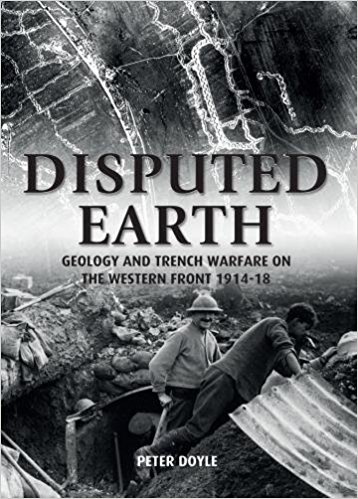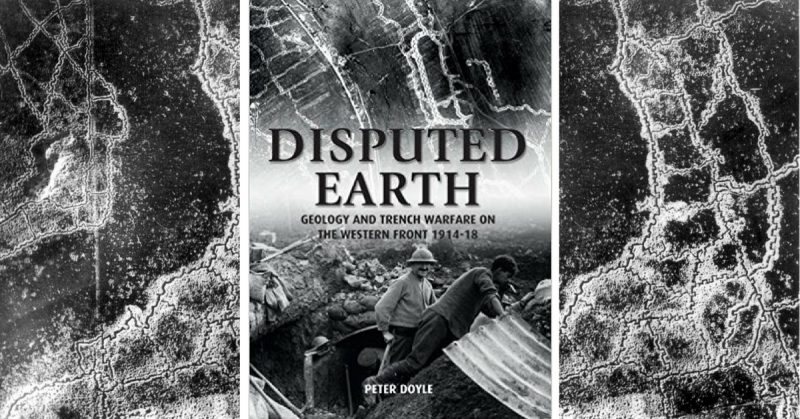Ok, so we’re out exploring the World War One battlefields in France. It’s cold and wet and the sky is like cold porridge. We’ve come over the Redan Ridge on the Somme having spent time looking for a sinkhole someone mentioned had been seen down near Serre. The rain is horizontal and the car is stuck close to New Munich Trench cemetery, slithering around in a mess of brown goo. At this point I would prefer to be in a café somewhere drinking something hot but we’ve got water and Snickers bars and there is stuff to do.
Whether any of this sounds like fun to you depends on many things. But this is the point, this was all happening in the name of fun. Imagine having to live and fight in places like these? There are locations on the Western Front where a walk of a few yards into a muddy field can see people of modest height become the six-foot plus giants they always wanted to be. There are others where the chalk breaks up like a sticky paste that never washes out of the hem of your trousers. In summer the chalk can feel like concrete and the dirt just brushes away. Poppies grow in the disturbed earth and traces of a war now out of living memory are everywhere.
I have a couple of friends who are proper geologists with degrees in the subject and who work full time in really silly places on the atlas looking for natural gas.
The one time I had one of them with me on a battlefield trip he was looking at the land an enthusing at how it was formed and the importance it placed on the course of the war in that part of Flanders where we happened to be. Its impressive stuff but the reality is this knowledge has something of the dark arts about it. Mud is mud, holes are holes and chalk is chalk. All true – but when you have to live and wage a war in it, above and below ground, real knowledge of what is below your feet takes on immense importance. Dig a pit in Flanders and it will fill with water. Do the same on the Somme and you will get on well, but all your neighbours, friendly or otherwise will know exactly where you are digging. Try it on the Gohelle or on the Artois and you will face other challenges.
To do a thorough battlefield tour you need guides, IGN maps and Linesman to show you where the trenches were. This book by Peter Doyle explains why positions were dug in a particular way. We learn what influenced the sappers to work in the way they did and how all this impacted on living and fighting a war.
It is interesting to learn the effect of high explosive and shrapnel balls on particular landscapes. How tunnellers kicked their way through dense clay and built impressive subterranean galleries used for all manner of roles. There is so much, here; I admit I found some of the book quite imposing. But, this is very much an essay in a deeper, more ancient history that was brought right up to date in the four years of the Great War a century ago. In passing we understand why Belgium was such a favoured battlefield for centuries from Marlborough to von Kluck.
So, whom will this book appeal to? If you are fortunate to spend time on the battlefields Mr Doyle will give you a deeper understanding of why things are where they are and you may even be able to predict layouts for yourself. Details become clear.
Geology students will find it interesting to explain how their dark art was applied to warfare by some of their predecessors whose skills were increasingly valued by the military. Readers of general history will just find it all deeply fascinating. Mr Doyle gives us a wholly different take on the war, not just the well-worn blend of donkeys, poppies and poetry.
For me, this book is as valuable and mysterious as the guides to bunkers and casemates that I enjoy exploring. It adds to my understanding of why my boots are covered in cloying mud and how I often end up on my backside slithering down a ridge. It goes some way to showing why relics of the war are easier to spot in some places than others – not just because a plough has been through lately. Although my friends will confirm I rarely see anything, least of all the loop of wire I am about to trip over. I’m a photographer and always looking up! That is my excuse and I’m sticking to it. Not unlike my old Toyota on the track on the Redan Ridge.

Reviewed by Mark Barnes for War History Online
DISPUTED EARTH
Geology and Trench Warfare on the Western Front 1914-18
By Peter Doyle
Uniform Press
ISBN: 978 1 910500 87 3
